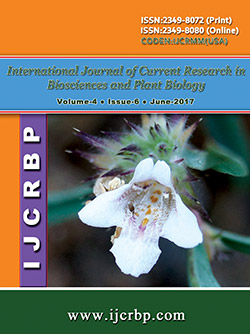 |
Online ISSN : 2349-8080 Issues : 12 per year Publisher : Excellent Publishers Email : editorinchiefijcrbp@gmail.com |
This study is to determine the interest of the people of the rural region Deba-Relizane (West Algeria) for the phytotherapy by using the medicinal plant Thymus vulgaris called zàatar. The density of this plant is around 3-8 plts/ 200 m². An investigation has been conducted on the users of this plant through precise questions about the use of this plant, included a 560 users of the area population. Chemical and biological tests were conducted on the content of this plant about active substances, and determine their effectiveness. The (100g) is put in an the extraction process by maceration a 100g of material vegetal in the ethanol mixture/water (30/70: v/v) during 72 hrs, confrontations with increasing polarity solvents, with ether of oil and ethyl acetate AE, methyl ethyl ketone, MEK. The mobile phase is a mixture of organic solvents which gives the best separations, and revealing with the UV (254Nm, and 365Nm). Thymus vulgaris has 8.97± 0,002 Mg EAT/g; The flavonoids quantity of the ethanolic extracts as quercetin equivalent (EQ) is 8.56 ±0.001 mg/g. Chromatographic behavior of EA and MEK phase of Thymus vulgaris on polyamide plate (DC6), in the solvent (toluene /methanol/ethanol) (3/4/3) and in the solvent (acetic acid /methanol/ water/) (95/5/5). The absorption peaks in the area UV-Screw: BI (329.5 Nm) and BII (280.5 Nm), make us think that this substance belongs to flavonols, all the previous criteria, the molecule like following: keampférol 3OR', 7OR”, lutéoline 7OR', quercetin 3OR ', 7OR”, chrysin 7OR', apigénine 5OR', 7OR”. The biological study was carried out through the effect, free radical scavenger action of the active substances isolated from Thymus vulgaris. The free radical scavenger activity of our products was evaluated by the method of DPPH, (2-2-diphényl-1-picrylhydrazyl), The results of the antibacterial action of the substances isolated from Thymus vulgaris the diameters of the inhibition zones reveal fairly important inhibition zones with respect to Staphylococcus aureus whom diameter of inhibition zones vary from 8-18 mm for Escherichia coli, and of 10-15 mm for Staphylococcus aureus. It is concluded from the present study that the users of Thymus vulgaris are lacking scientific information, but the laboratory research proved the presence of effective and influential substances on various harmful organisms, which can be evaluated in several medical and biological fields.
